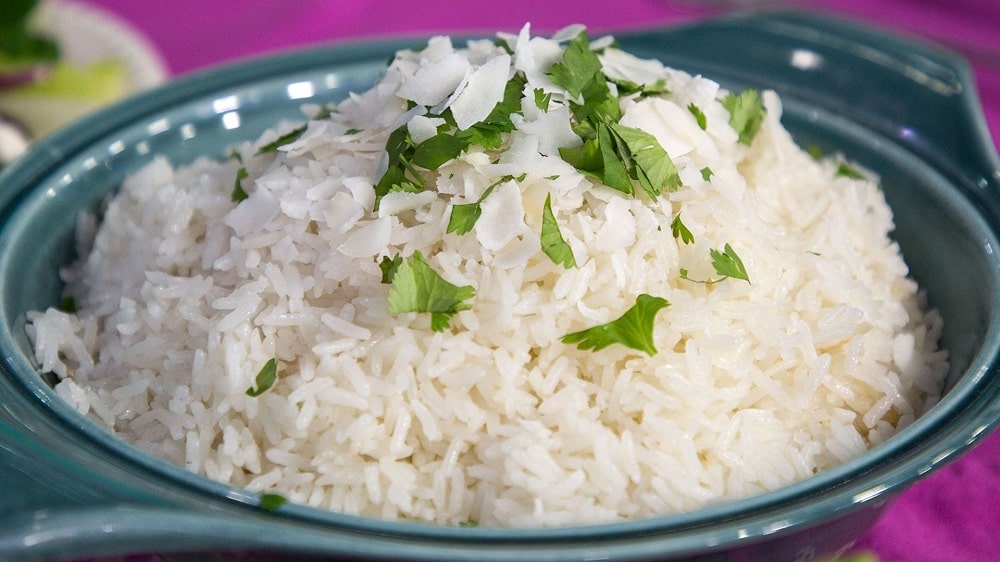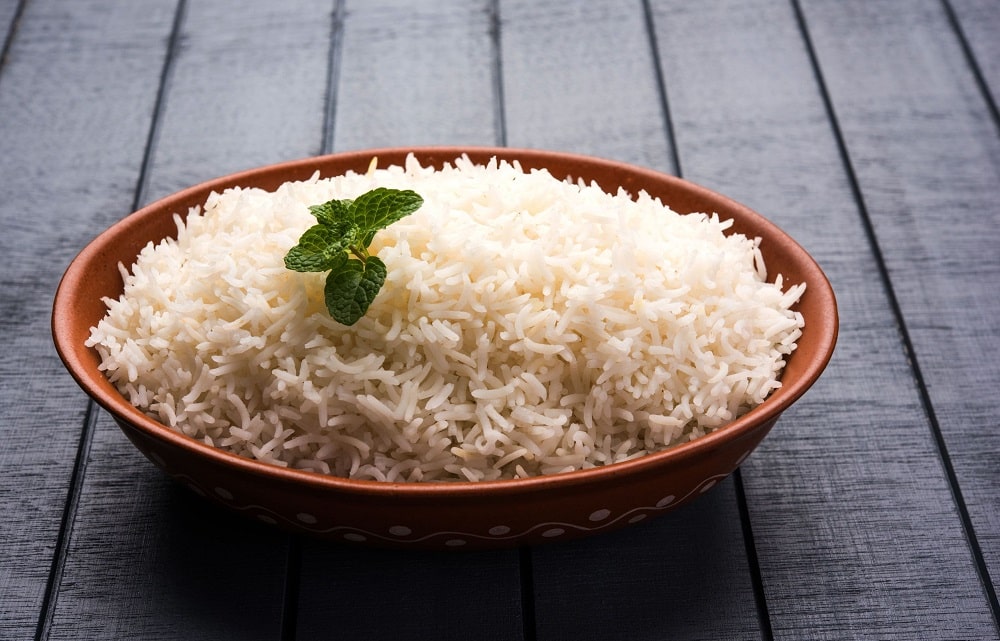Rice is a staple food for billions of people around the world, and among the many varieties available, basmati and jasmine rice are two of the most popular. Both types of rice have unique flavors, textures, and culinary uses, making them favorites in various cuisines. In this comprehensive guide, we will explore the differences between basmati and jasmine rice, including their nutritional profiles, cooking methods, and best uses in dishes. By the end of this article, you will have a clear understanding of basmati vs jasmine rice and be able to choose the right one for your culinary needs.
What is Jasmine rice? Characteristics and nutritional composition of Jasmine
Jasmine rice is a long-grain aromatic rice native to Southeast Asia, grown in Thailand, Vietnam and Cambodia. It is known for its distinctive floral aroma and slightly sticky texture when cooked. The grains are generally shorter than basmati rice but are still classified as long-grain rice. It is commonly used in Southeast Asian and East Asian cuisines, especially Thai and Vietnamese cuisines, where its unique flavor complements many curries, stir-fries and salads. It is also an ingredient in traditional dishes such as noodles, rice cakes, vermicelli, etc.
Characteristics of Jasmine Rice
- Flavor Profile: Jasmine rice has a sweet, floral aroma that enhances the overall taste of dishes. Its flavor is delicate yet distinct, making it a favorite in many recipes.
- Texture: When cooked, jasmine rice tends to be slightly sticky and moist. This characteristic makes it ideal for dishes where the rice needs to hold together, such as sushi or fried rice.
- Culinary Uses: Jasmine rice is commonly used in Thai dishes like Pad Thai and green curry. It also pairs well with grilled meats and vegetables.
Nutritional Content of Jasmine Rice
Nutritionally, jasmine rice is primarily composed of carbohydrates, making it a significant source of energy. A serving of cooked jasmine rice (about one cup) contains about 205 calories, 44.5 grams of carbohydrates, and 4 grams of protein. It is low in fat, at only about 0.5 grams per serving, and provides essential nutrients such as manganese, folate, and selenium. Although jasmine rice is not as high in fiber as brown rice, it still provides some dietary fiber, which aids digestion. Overall, jasmine rice can be a healthy addition to a balanced diet when consumed in moderation, especially when combined with other nutrient-dense foods.

One cup (about 158 grams) of cooked white jasmine rice contains approximately:
- Calories: 205
- Carbohydrates: 44.5 grams
- Protein: 4 grams
- Fat: 0.5 grams
- Fiber: 0.6 grams
- Key Vitamins and Minerals:
- Manganese: 37% of the Daily Value (DV)
- Folate: 23% of the DV
- Selenium: 17% of the DV
What is Basmati Rice? Characteristics and nutritional composition of Basmati
Basmati rice is another long-grain variety known for its nutty flavor and fluffy texture. Originating from the Indian subcontinent, particularly India and Pakistan, basmati rice has gained popularity worldwide due to its aromatic qualities and versatility in cooking.
Characteristics of Basmati Rice
- Flavor Profile: Basmati rice has a rich, nutty flavor that adds depth to dishes. Its aroma is often described as fragrant and slightly earthy.
- Texture: When cooked, basmati rice remains fluffy with separate grains. This characteristic makes it an excellent choice for biryani and pilaf dishes where distinct grains are desired.
- Culinary Uses: Basmati rice is commonly used in Indian cuisine, particularly in biryani and pulao dishes. It also pairs well with rich curries and grilled meats.
Nutritional Content of Basmati Rice
Basmati rice, a popular choice in Indian and Middle Eastern cuisine, is prized for its distinctive flavor and aroma. It is low in fat and a good source of essential vitamins and minerals such as thiamine, folate, and selenium. The dietary fiber content of this rice aids digestion and helps regulate blood sugar levels. When consumed in moderation, basmati rice can be a nutritious part of a balanced diet.

One cup (about 163 grams) of cooked white basmati rice contains approximately:
- Calories: 210
- Carbohydrates: 45 grams
- Protein: 4 grams
- Fat: 0.6 grams
- Fiber: 0.6 grams
- Key Vitamins and Minerals:
- Manganese: 24% of the DV
- Selenium: 16% of the DV
- Niacin: 12% of the DV
Comparison of glycemic index of Basmati and Jasmine rice
The glycemic index (GI) is an important factor to consider when comparing basmati and jasmine rice, especially for those who are monitoring their blood sugar levels.
- Jasmine Rice GI: Approximately 68 (medium to high)
- Basmati Rice GI: Approximately 50 (low)
Basmati rice typically has a lower glycemic index, ranging from 50 to 58, meaning it causes a slower and more gradual rise in blood sugar levels after consumption. This makes it a suitable choice for people with diabetes or those looking to maintain stable energy levels. In contrast, jasmine rice has a higher glycemic index, typically ranging from 68 to 80, resulting in a more rapid spike in blood sugar levels.
This significant difference in GI highlights that while both types of rice can be part of a balanced diet, basmati rice may be the better choice for those concerned about blood sugar control.
Taste and how to identify basmati and jasmine rice
When it comes to choosing between basmati and jasmine rice, understanding their distinct flavors and characteristics is essential. Basmati is famous for its nutty, slightly sweet flavor and is slightly dry when cooked. Therefore, the rice can be combined well with soup dishes. The rice has long, thin grains that remain fluffy and separate when cooked, making it a great pairing with biryani and pilaf dishes.

Jasmine rice, on the other hand, is known for its sticky, sweet, fluffy, and voluminous texture. The jasmine scent, which is the name, is the easiest way to identify this rice. The rice tends to be softer and moister, making it great for stir-fries and Thai curries, where it can absorb the flavors of the accompanying dishes.
To identify these two types of rice, look for their grain shapes: basmati rice grains are long and thin, while jasmine rice grains are shorter and plumper. Additionally, when cooked, basmati rice has a firmer texture with distinct grains that do not cling together as much as jasmine rice does. The aroma is another distinguishing factor; basmati offers a subtle nutty scent reminiscent of popcorn, while jasmine rice exudes a more pronounced floral fragrance. By understanding these differences, you can select the right rice for your culinary creations, ensuring that each dish achieves its intended flavor profile and texture.
Cooking Methods
Both jasmine and basmati rice require specific cooking methods to achieve perfect results. Here’s how to cook each type effectively.
How to Cook Jasmine Rice
- Rinse the Rice: Start by rinsing one cup of jasmine rice under cold water until the water runs clear. This step helps remove excess starch and prevents stickiness.
- Water Ratio: Use a ratio of 1 cup jasmine rice to 1-1.2 cups water.
- Cooking Process:
- Cooking Process: After washing the pot, add Jasmine Tea along with a moderate amount of water.
- Start the stove and cook the rice. Note to keep the heat low and cook slowly to avoid burning. And do not open the lid too much because it will lose the heat to cook the rice.
- Watch the rice until it is cooked and you feel it is suitable for the quality you want and turn off the stove.
- Use chopsticks, spoons or some tool to fluff the rice and then cover the pot to let it sit for 5-10 minutes. Then you can take it out and enjoy

How to Cook Basmati Rice
- Soak the Rice: Soak one cup of basmati rice in water for at least 30 minutes before cooking. This helps elongate the grains during cooking.
- Rinse the Rice: After soaking, rinse the basmati rice under cold water until it runs clear.
- Water Ratio: Use a ratio of 1 cup basmati rice to 1.5-1.8 cups water.
- Cooking Process:
- In a pot, bring water to a boil.
- Add soaked and rinsed basmati rice along with a pinch of salt.
- Reduce heat to low, cover with a lid, and simmer for about 15 minutes.
- Remove from heat and let it sit covered for an additional 10 minutes before fluffing with a fork.
Health Benefits and Considerations
When evaluating whether you should choose difference between jasmine and basmati rice for health reasons, consider their nutritional benefits:
Is Basmati Rice Healthier?
Basmati rice is often considered healthier due to its lower glycemic index compared to jasmine rice. This means it may lead to more stable blood sugar levels after consumption.
- Lower GI helps manage blood sugar levels.
- Contains essential vitamins like niacin that support metabolism.
- High manganese content supports bone health.
Is Jasmine Rice Healthy?
Jasmine rice can be part of a healthy diet when consumed in moderation alongside other nutrient-dense foods.Health Benefits:
- Provides quick energy due to high carbohydrate content.
- Contains essential minerals like manganese that support metabolic processes.
- Its unique flavor can enhance meal satisfaction when paired with healthy ingredients.
Which is Better for Weight Loss?
When considering weight loss goals:
- Opting for whole grain versions (like brown basmati or brown jasmine) can provide more fiber and nutrients than their white counterparts.
- Portion control is essential regardless of which type you choose; both can fit into a weight-loss plan if consumed mindfully alongside vegetables and lean proteins.
Which rice is better, jasmine or basmati?
Choosing between jasmine rice and basmati rice ultimately comes down to personal preference and the specific dish you’re making. Jasmine rice is often favored for its sweet, floral aroma and slightly sticky texture, making it ideal for Southeast Asian dishes. If you’re looking for a great, hearty breakfast, jasmine rice is a good choice.

Basmati rice, on the other hand, is praised for its rich flavor and spongy texture that stays separate when cooked, making it perfect for Indian dishes like biryani and pilaf. Nutritionally, basmati rice is generally lower on the glycemic index than jasmine rice, which can be beneficial for those monitoring their blood sugar.
Culinary Uses: When to Use Each Rice Type
Understanding when to use each type can enhance your culinary creations significantly:
Best Dishes for Jasmine Rice
Jasmine rice shines in Southeast Asian cuisine:
- Thai curries (green curry or red curry)
- Stir-fries (like Pad Thai)
- Coconut sticky rice desserts
- Fried rice dishes where stickiness is desired
Best Dishes for Basmati Rice
Basmati’s nutty flavor complements Indian cuisine beautifully:
- Biryani (layered meat-and-rice dish)
- Pulao (spiced vegetable or meat dish)
- Pilaf (rice cooked with spices)
- Accompanying rich curries or grilled meats

In summary, both difference between jasmine and basmati rice offer unique flavors and textures that cater to different culinary needs. When considering basmati vs jasmine rice, think about your dish’s requirements—do you need sticky grains or fluffy ones? For health-conscious individuals looking at glycemic index values, basmati may be preferable due to its lower GI.
Read more:
- How to cook jasmine rice in just 5 minutes, simple and quick instructions
- How to Distinguish Old rice and New Rice? Is It Safe to Eat Old Rice?
- Is Jasmine Rice Healthy? Nutritional Facts of Rice
Ultimately, whether you choose jasmine or basmati depends on personal preference and how you plan to use them in your cooking endeavors. With this comprehensive guide on jasmine vs basmati rice, you now have all the information needed to make an informed choice that suits your taste buds and dietary needs.



